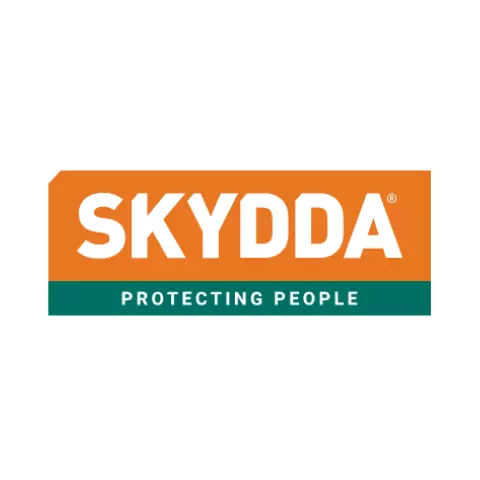Arbesko Kiruna Safety Shoe
Product description
Heat-insulated safety shoe with a cold-insulating sole. Heat-insulated safety shoe with non-slip sole. This is the shoe for those who work long hours outside on cold winter days and need a shoe that can withstand both cold and wet. Two insulating lining layers; Prima Loft Bio and wool lining. The soft wool lining makes the shoe soft and comfortable and keeps your feet warm. The midsole has a wool lining layer for extra insulation against the cold of the land. The upper of the shoe is made of impregnated, water-repellent. Super 8 leather that resists moisture and wetness for up to eight hours. The toe of the shoe is made of Kevlar. Keprotec toe protection and PU coating for added abrasion resistance. The shoe features both lacing for a snug fit and a zipper on the side for quick and easy on and off. Inside the zipper is a nylon piece to keep moisture and wet out. The shoe is particularly roomy and wide. The outer sole is made of nitrile rubber, which resists both heat and oil and prevents slipping even at low temperatures. The midsole is made of cushioning PU material with a heel cushion made of recycled material for extra cushioning. Meets the requirements of ISO 20345:2011 SRC S3 P CI FO HI WR A
The interior fabric that touches your foot, affecting comfort, moisture control, and temperature regulation during long work shifts in demanding environments.
The method used to secure the shoe to your foot, affecting ease of putting on/removing, adjustability for comfort, and workplace safety.
Indicates whether the footwear has protective reinforcement (Safety) or no special toe protection (Plain), affecting workplace safety compliance and injury prevention.
Identifies the protective material in the toe cap that shields against impacts and compression. Different materials offer varying levels of protection, weight, and comfort.
Offers robust defense against underfoot hazards. A reinforced sole prevents sharp objects from piercing through, protecting feet in risky environments.
Reduces impact on feet and joints, lessening fatigue during long hours on hard surfaces. Provides enhanced comfort for demanding work environments.
Enhances stability on slick surfaces, reducing the risk of slips and falls. Designed for reliable grip and secure footing in various work environments.
Withstands degradation from oil exposure, maintaining sole integrity and extending shoe life. Ensures reliable traction in oily environments.
- Heat & Flame Resistance
- Impact Resistance
- Electrical Protection
- Water Resistance
- Slip Resistant
Request a free sample
Test first and buy later. Visit any product page to request your free sample.
Standards and labels
Test results
General Requirements HROThe HRO result listed in the standard EN ISO 20345:2011 pertains to the heat resistance of the outsole of safety footwear. This test result confirms that the outsole is capable of withstanding exposure to high temperatures without degrading its physical properties and performance. The test method requires that the outsole of the footwear be exposed to 300°C for a minimum of 60 seconds under specified conditions, during which the outsole should not melt or crack, ensuring that it continues to provide protection against hot environments. Since the HRO classification attests to heat resistance, this feature is particularly important in industries such as metallurgy or construction, where contact with hot surfaces is a common hazard. Understanding this result can assist procurement professionals in sourcing appropriate safety footwear that meets the required durability and performance in high-temperature working conditions.
General Requirements CRThe standard EN ISO 20345:2011 encompasses general requirements for safety footwear to ensure they provide adequate protection in various occupational environments. Rating 'CR' signifies that the footwear has a cut resistant upper ensuring enhanced protection. The test method involves assessing the material's resistance to splitting or cracking under certain conditions, which simulates real-world industrial hazards involving sharp objects or surfaces. Practically, this result ensures that the footwear is suitable for environments where there is a risk of materials splitting or getting caught, thereby providing essential safety benefits to the user.
General Requirements AEN ISO 20345:2011 sets standards for safety footwear intended for professional use, ensuring that such footwear provides adequate protection according to specified safety requirements. Rating A means the footwear has antistatic proterties. The practical implication of an A rating result is that the footwear is certified as having met the necessary conditions for standard professional use, which can reassure procurement professionals of the product's basic safety compliance specific to an industrial or harsh working environment. Such comprehensive testing and certification mean that businesses can ensure worker safety and regulatory compliance when procuring such footwear.
General Requirements CIThe CI designation in the standard EN ISO 20345:2011 refers to the insulation performance of footwear against cold. This specification indicates that the footwear offers insulation against cold conditions, protecting the wearer's feet from low-temperature environments. The test method for determining this involves measuring the temperature decrease inside the footwear when exposed to cold conditions over a specified period. This performance is crucial for footwear used in conditions where exposure to cold is significant, ensuring safety and comfort for the wearer in such environments. The practical implications for safety footwear in this category include enhanced worker safety and performance in cold climates, applicable to industries such as construction, cold storage, and outdoor operations in winter conditions.
General Requirements FOThe standard EN ISO 20345:2011, specifically its General Requirement FO, pertains to footwear containing fuel oil-resistant outsoles. When footwear under this specification successfully meets the FO requirement, it implies that the footwear's outsole has been tested and confirmed to resist degradation due to contact with fuel oil. The test involves exposing the outsole material to fuel oil for a determined period, typically 22 hours, at a controlled temperature of 22°C. This test assesses the change in volume and properties of the outsole following fuel oil exposure by measuring its tensile strength and elongation before and after the exposure. For procurement professionals, a positive FO result indicates that the footwear's outsole will maintain its mechanical performance and integrity when in contact with fuel oil, making it suitable for industries where oil exposure is frequent, providing durability and reliable performance under such conditions.
General Requirements HIThe General Requirements HI result in the standard EN ISO 20345:2011 indicates that the footwear has been evaluated for insulation against heat. This particular result implies that the footwear can offer a certain level of protection against heat, ensuring that the user's feet are insulated when exposed to high temperatures. The test for this requirement involves assessing the footwear's capacity to provide insulation from heat under controlled test conditions. Given the practical implications, this result suggests that the footwear is suitable for environments where exposure to heat is a significant factor, such as in foundries or steel mills, thereby safeguarding the wearer’s feet against thermal risks. This is crucial for procurement professionals when considering safety footwear for sectors where heat resistance is paramount, ensuring compliance with safety regulations and protective performance criteria.
General Requirements PEN ISO 20345:2011 specifies safety requirements for footwear used in a range of industries to protect wearers from mechanical risks and other workplace hazards. The 'P' designation indicates that the footwear has been tested for penetration resistance, which means it can withstand a force of up to 1100 Newtons from sharp objects like nails. This test is conducted by applying a specified force to a nail or similar sharp object against the sole of the footwear to ensure it cannot penetrate through to the foot. Footwear meeting this requirement is essential for industries where workers are at risk of stepping on sharp objects, such as construction or manufacturing, providing a critical level of protection to the wearer's feet.
General Requirements S3The EN ISO 20345:2011 standard specifies the general safety requirements for protective footwear used in various industries. The S3 designation under this standard means the footwear has met certain criteria, including basic toe protection, anti-static properties, energy absorption of the seat region, water resistance, fully enclosed heel, cleated outsole, and penetration resistance by a steel midsole. This classification involves specific test methods like compression and impact tests on toe protection, antistatic resistance tests, energy absorption verification at the heel section, water penetration, and absorption tests to ascertain the upper material's resistance, and penetration resistance tests to ensure the protective features of the outsole and midsole. For industries requiring protective footwear that can withstand mechanical risks, moisture, and sharp objects, achieving an S3 result guarantees a high safety level, making footwear that meets this requirement suitable for environments with increased moisture and at risk of foot penetration by sharp objects.
General Requirements WRThe standard EN ISO 20345:2011 includes various general requirements for safety footwear, among which the WR test result indicates that the footwear has been certified as water-resistant. This test result specifically means that the footwear has successfully passed evaluations confirming its capability to prevent water penetration under specified conditions. The test method involves the footwear being subject to a dynamic water test, where it is exposed to mechanical action in the presence of water for a certain period to simulate wearing conditions in wet environments. The practical implication of this result for safety footwear is significant as it ensures that the footwear provides adequate protection against water ingress, which is vital for individuals working in environments where exposure to water or dampness is frequent. This certification lends reassurance that the footwear will maintain its performance and comfort in challenging wet conditions, thereby improving wearer safety and job performance.
CE Marking is a label that shows a product meets certain safety and environmental standards set by the European Union. To get the CE Marking, a company must test and certify their product meets these standards. CE Marking is required for many products sold in the EU, including electronics, machinery, toys and medical devices. It helps ensure that products are safe for consumers and the environment, and allows for easy trade within the EU.
Skydda delivery terms
Free delivery for all Skydda products
247,48 €
Price per pair
247,48 € / pair
Shipping fee is 6,33 € for orders under 150,00 €
Sold in units of one pair
Need larger quantities?
Other products you may like
Recently viewed
Need help?
Get help from our experts
Other products you may like
Similar products you may like
Recommended for you
Skydda
Delivery time: 3 business days
Supplier shipping fee 6,33 €
Free shipping on orders over 150,00 €



Find +150,000 products from hundreds of brands
Autonomous sourcing platform
The most efficient way to source and order supplies for your operations
Sourcing
Ordering
List products you’re looking for and we’ll find the best products and prices for you – all for free.
Need help?
Get help from our experts
